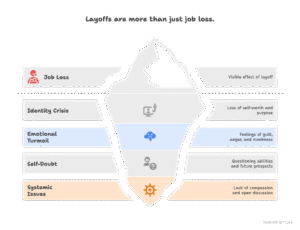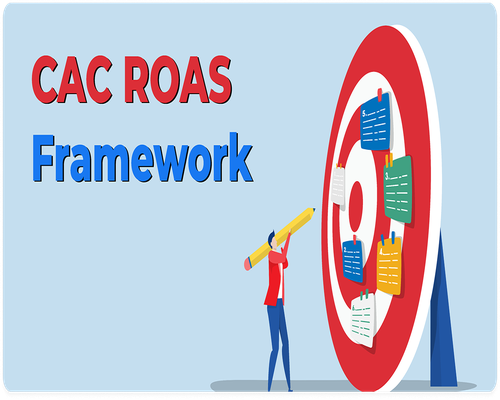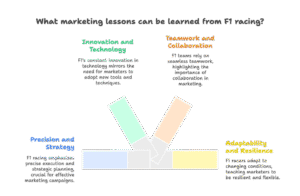
CAC ROAS Framework

Introduction: Real Talk About CAC & ROAS
We’ve all presented marketing reports and seen leadership eyes light up at a drop in CAC— or a spike in ROAS. We know how powerful these metrics are.
But here’s the uncomfortable truth: chasing either without context is risky.
I’ve spent nearly a decade managing campaigns for both agencies and brands across multiple industries; from scaling startups to large organisations and one thing is clear:
The goal isn’t just reducing CAC or boosting ROAS. It’s doing both sustainably.
This post isn’t theory. It’s a practical framework rooted in what has actually worked — for me, for my teams, and for real businesses.
The CAC-ROAS Tug of War
Let’s quickly recap:
CAC (Customer Acquisition Cost) is how much it costs to acquire a paying user.
ROAS (Return on Ad Spend) is how much revenue you generate for every rupee (or dollar) you spend on ads.
They’re connected. But not always in obvious ways. You can lower CAC and still hurt ROAS if the users you bring in don’t convert or retain.
The real question is not “how do I reduce CAC of my channels?”
It’s “how do I spend smarter to earn more from every user I acquire?”
My 5-Pillar Framework to Reduce CAC & Improve ROAS
This is the process I’ve followed — whether I was handling a ₹20 Cr annual budget or I was scaling channels from scratch.
Pillar 1: Start With a Funnel Health Check
Before I start a campaign or increase spends, I pause and audit the journey.
What are my customers filling?
- Is this is a reason for drop off or bounce?
- Is my landing page aligned with the ad that’s currently running?
- Do users know what happens after they sign up?
Fixes I’ve used:
- Simplified lead forms – I’ve reduced form fields and in some case I have also increased – This has allowed me to control the type of audience coming into the system improving the overall quality of the audience.
- Added sticky CTAs, popups – while this can be annoying to the audience, this has allowed me to keep the customers on the landing page. I also have instances where I’ve contextually up-selled a better product / service by showcasing the right popup / sticky bar.
I have used Hotjar & Microsoft Clarity to identify the flow of the customer in the landing pages and poor UX zones – This allowed me to rework the landing page design improving the overall look and feel of the page & increasing the visitor time by 1.7x.
Realisation: You don’t have a CAC problem. You have a conversion friction problem.
Pillar 2: Rethink Your Audience Strategy
It’s tempting to keep targeting broader audiences when scale dips. But that’s usually when CAC creeps up the most.
What works better? Micro-cohorting.
Split audiences by behavior: “Visited page but did not fill a form / Sign Up” or “Added to the cart” but “did not purchase”
I’ve used remarketing by segmenting the audience. Showing different ads for cart droppers vs. early explorers.
Tip from experience: Bucket audiences into different cohorts and upload them for lookalike campaigns (even with <5k users, the lookalike campaigns would often outperform broad interest-based targeting).
Pillar 3: Align Creatives with User Intent
Not all audiences want the same story.
Top-of-funnel (TOFU): Teach me the problem, Give me information
Mid-funnel (MOFU): Show me why you’re different, What works, Why are you better?
Bottom-funnel (BOFU): Give me a reason to act now.
I’ve tested:
A “AI Based Informational video vs Testimonial video” for a healthcare brand looking capture customers for one of it’s services.
“Time running out” advertisement pushed through InShorts, in parallel running a “Batch Closing Soon” for the EdTech brand had 4x higher qualified users & conversions
Lesson: It’s about when you reach a customer, what are you showing them? Sometimes, the best-performing creative often sells without “selling.”
Pillar 4: Optimise for the Role of Each Channel (Not Just Budgets)
Every channel plays a different role in your customer’s journey — and treating them equally is where most of the time we & performance teams go wrong.
Instead of asking, “Which channel is cheaper?”, what we should be asking is, “Which channel is doing its job in the journey best?”
What I Watch Closely Instead of “Overlap”
Most of the organisations that I have worked with, I have not been able to map overlap. This is because most organisations do not have CDPs or advanced multi-touch attribution models to exactly determine the overlap. So, here’s what I focused on that’s both practical and insightful:
Attribution paths in GA4 (e.g., which channels assist conversions before last-click)
View-through conversions for YouTube
Drop-offs in campaign-specific journeys (e.g., SEM traffic converting worse than Meta = is there an intent misalignment?)
Cost per qualified action, not just CPL (especially in high CAC categories like healthcare or insurance)
Campaign sequence testing: Run Meta-first vs. Google-first sequences to see what builds better funnel momentum
Final Thoughts
I’ve sat in rooms where leadership said, “Just increase or reduce the budget without accounting for the impact on revenue.”But here’s what I’ve learned:
- If you don’t know why and how something is working, you won’t know how to fix it.
- Reducing CAC and improving ROAS isn’t a tactic. It’s a system. One that you build, test, and evolve continuously.
- If you found this helpful or have your own approach to improving CAC/ROAS, let’s connect. I’d love to swap notes.


